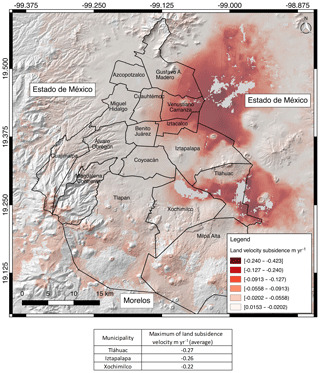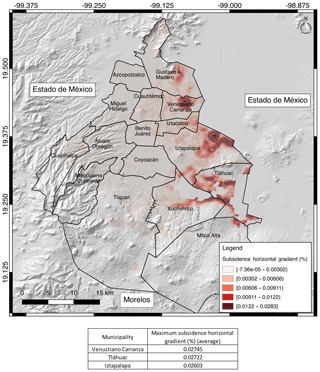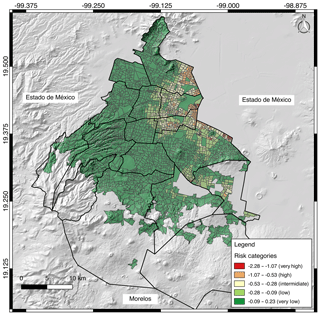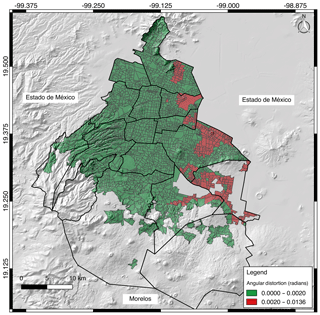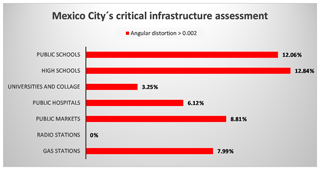Land Subsidence risk maps and InSAR based angular distortion structural vulnerability assessment: an example in Mexico City
Land subsidence is a phenomenon present in several cities in central Mexico, and results from a combination of groundwater resources' overexploitation and the local stratigraphic nature. Furthermore, subsidence occurs inhomogeneously in space, producing differential vertical displacements, which affect both the natural media, as well as human-built structures. Subsidence associated structural-vulnerability assessments usually rely on direct field measurements to determine parameters such as angular distortion. However, the large areas in which land subsidence occurs (city-scale) in Mexico City hinders a direct quantification of differential displacements for all buildings and structures present in it. A Sentinel-1 based subsidence analysis shows that the highest velocities are located on the eastern sector of the city. This velocity map was used as the basis for a population density weighted land subsidence correlation analysis. Our Land Subsidence Risk assessment indicates that 15.43 % of the population of Mexico City live in intermediate, high and very-high risk zones which corresponds to 1 358 873 inhabitants. Therefore, a significant percentage of Mexico City's population is vulnerable to suffering damage in their housing structures due to land subsidence. Furthermore, the lower income inhabitants share a proportionally greater economic cost due to land subsidence and associated shallow faulting. The structural vulnerability analysis of the civil structures in the city was performed using angular distortion maps derived from the subsidence velocity gradient between October 2014–October 2017 period. These maps indicate that within this time window, ∼12 % of the total urbanized area in Mexico City had already exceeded a 0.002 radian angular distortion threshold; above which damage in civil structures is more likely to occur. In fact, more than 1 million people have already suffered damages in their houses due to the differential ground subsidence and the resulting structural angular distortion. With these results, we can evaluate correspondence between angular distortion map and critical infrastructure of the city, as a result, we found that between 0 % and 12.84 % of these buildings have undergone over 0.002 radian angular distortion.






